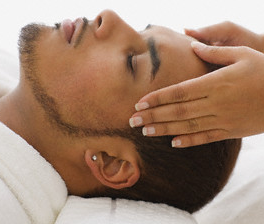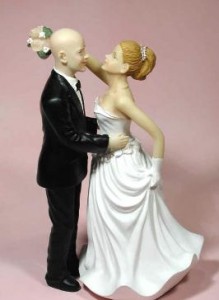Posts Tagged ‘male patterned hairloss’
Wednesday, October 7th, 2009
 In a recent email sent to our office from a recent patient, he writes in regards to his scalp evaluation and regarding Propecia (Finasteride). He asks, “Could finasteride worsen the hairline due to the rise of testosterone?” and, “if there’s any safe and minor treatments to slow the progress of maturation or reverse it that you would recommend at this stage?” In a recent email sent to our office from a recent patient, he writes in regards to his scalp evaluation and regarding Propecia (Finasteride). He asks, “Could finasteride worsen the hairline due to the rise of testosterone?” and, “if there’s any safe and minor treatments to slow the progress of maturation or reverse it that you would recommend at this stage?”
Early stages of male patterned hair loss may not always be obvious enough to be differentiated from normal levels of miniaturized hair during scalp microscopic evaluation. Propecia (finasteride) is still the most recommended hair loss medication to prevent additional balding. Some patients have even been prescribed Propecia without proper diagnosis or documentation of their hair loss condition making it difficult to tell if they have gotten better since they started or worsened.
Propecia (finasteride) is designed to block DHT (Dihydrotestosterone) which is the main cause of male patterned hair loss. With this in mind, finasteride cannot deteriorate your hair loss or cause changes in the hairline. Maturation of the hairline is normal in all men and should not be confused with balding. We also do not have any further recommendation on medications that can stop the maturation of the hairline.
Tags: beverly hills, Beverly Hills Hair Restoration, finasteride, hair line, hair loss, hair transplant surgery, hairline maturation, hairline recession, male patterned hairloss, men hair loss, miniaturization, testosterone, young patients with hair loss
Posted in Bakersfield hair transplant, California hair transplant, hair transplant, men hair restoration, Newport Beach hair transplant, Orange County hair transplant | No Comments »
Tuesday, September 15th, 2009

As with any surgical procedure, you would have to worry about certain side effects or tedious maintenance. We are asked by every potential surgical patient, “When can I go back to work after my hair transplant surgery?”
Downtime doesn’t only apply to the amount of time you would spend away from your office or how soon you can return. This all depends on the type of work that you do, whether or not you can use a hat, how sensitive the issue of your hair transplant is and whether or not you want to keep it a secret.
We have a few follow up dates after the hair transplant surgery in our California Hair Transplant Offices and each must be completed. On the day after surgery, all patients must have a hair wash done in office to best instruct the patient. We make sure to clean the patient as thoroughly as possible without damaging the hair grafts in a professional and comfortable manner. We make sure the patient understands that scabbing and redness must be dealt with as soon as possible.
Patients are most concerned about how they will look the first few days. Redness and swelling are the most common side effect of the surgery and can last 4-5 days after the surgery. Patients can choose to wear a hat to cover the transplanted area from plain site.
On larger hair transplant cases, the swelling may actually progress to the eyebrow area or even the eyelids and under eyes. 5 to 6 days is all it should take for this kind of swelling to go down, generally. The swelling is most always triggered by large (2500 graft surgery) or mega-session (3000+ graft surgery) procedures but is almost undetectable on smaller cases.
The final concern or issue after hair transplant surgery is the visual aspect of the existing hair. Most cases, we trim the hair in both the recipient and donor area (0.5 to 2cm) and it will stay at about that length for 2 to 3 weeks. In about 90% of patients that undergo surgery, the transplant hair will fall out within the first 3 weeks. This means will look like they did before hair transplant surgery. By this point, there should not be any swelling or redness. Staples and/ or sutures are removed in less than 2 weeks after surgery and the transplanted hair follicles will then go into their resting phase until they are ready to grow again.
Tags: after hair restoration surgery, after hair transplant, complications, hair transplant, hair transplant surgery, high grade baldness, Los Angeles Hair Transplant Center, low grade baldness, male patterned hairloss, men hair loss, redness after hair transplant, swelling after hair transplant, us hair restoration
Posted in California hair transplant, hair transplant | No Comments »
Tuesday, September 8th, 2009

We understand people like to pamper themselves. A patient of ours wrote to us regarding a scalp and body massage. He had his hair transplant surgery in our Encino Surgical Office almost 8 months ago and asked, “Would get a head massage risk loosening the implants?” He also wanted to know if that would help increase circulation to the grafts and improve growth.
Hair that has been transplanted over 3 months ago and is growing normally is considered permanent and cannot be dislodged from your scalp. The main concern is in the first weeks of a hair transplant surgery when the hair is still settling in. Even so, some cases where the hair is removed the active part of the follicle may still remain and a new follicle will grow shortly after. At this point, hair cannot be harmed.
However, there is no proof that a scalp massage to increase scalp circulation is proven to increase the quality of existing or newly transplanted hair. More so, it has also not been proven that lack of blood circulation or oxygenation in scalp will cause hair loss.
Tags: after hair transplant, complications, Encino hair transplant, hair loss treatment, hair transplant surgeon, hair transplant surgery, hair transplatation, male patterned hairloss, men hair loss, scalp massage, scalp massage after hair transplant, us hair restoration
Posted in Uncategorized | No Comments »
Saturday, August 29th, 2009
 A patient sent us an email regarding his hair loss condition. He has male patterned baldness and it is still progressing. He already met with a dermatologist and had several studies done prior to the email and was even using Chronostim for approximately 3 months. Now that he’s used up the bottles of Chronostim, he has noticed no change is his hair loss situation. He wants to have a full head of hair and does not want to take hair loss medication for the rest of his life. Before we forget, his wedding is in 2 months. A patient sent us an email regarding his hair loss condition. He has male patterned baldness and it is still progressing. He already met with a dermatologist and had several studies done prior to the email and was even using Chronostim for approximately 3 months. Now that he’s used up the bottles of Chronostim, he has noticed no change is his hair loss situation. He wants to have a full head of hair and does not want to take hair loss medication for the rest of his life. Before we forget, his wedding is in 2 months.
Chronostim has not been clinically proven to correct or prevent male patterned baldness or any other form of hair loss. It should not be considered a replacement option for medications that have been both proven effective and FDA approved safe for consumption like Propecia (finasteride) DHT blocker.
We highly suggest that all patients experiencing any form of hair loss to be seen by a good hair transplant surgeon and have a miniaturization study done. If the condition is in fact male patterned baldness or androgenetic alopecia, finasteride should be a part of your everyday hair loss treatment plan.
Hair restoration surgery can restore the areas damaged by hair loss by transplanting healthy permanent hair from the donor. In this situation, however, neither of the aforementioned will make enough of a visible difference for the day of your wedding. These procedures take time to show their fullest effect. There are cosmetic options available like Toppik that can cover the balding or thinning areas of your hair through the use of microfibers. If anything, you can use that product for the wedding day while you either consider a hair transplant surgery or at least try using Propecia (finasteride) so that you may see true results a few months after your wedding.
Tags: balding prevention, chronostim, dht, finasteride, hair loss, hair loss product, hair loss treatment, hair transplant, hair transplant surgery, male patterned hairloss, men hair loss, toppik
Posted in hair loss medication, hair loss products, men hair restoration, Uncategorized | No Comments »
|
|
 In a recent email sent to our office from a recent patient, he writes in regards to his scalp evaluation and regarding Propecia (Finasteride). He asks, “Could finasteride worsen the hairline due to the rise of testosterone?” and, “if there’s any safe and minor treatments to slow the progress of maturation or reverse it that you would recommend at this stage?”
In a recent email sent to our office from a recent patient, he writes in regards to his scalp evaluation and regarding Propecia (Finasteride). He asks, “Could finasteride worsen the hairline due to the rise of testosterone?” and, “if there’s any safe and minor treatments to slow the progress of maturation or reverse it that you would recommend at this stage?”


